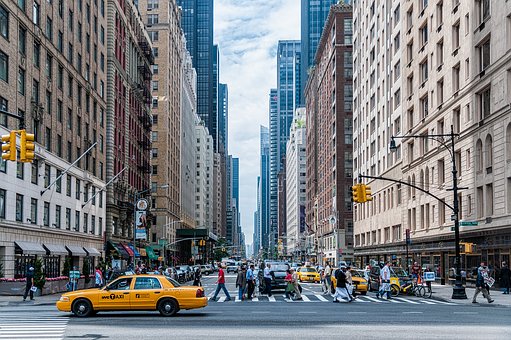HOMO URBANUS – the man of the urban future




‘The environment selects’ is a well-known Darwinist paradigm. The idea also holds water when the environment changes, in which case the changed environment selects. An environment without predators, with germs suppressed by antibiotics and other pills and with a reduced chance of natural embryo selection – this environment selects as well. But a different environment makes for different results. We no longer live on the East African savannah or the Russian tundra. Those of us who are sluggish, crippled or blind don’t become supper for a sabre-toothed tiger, and this is certainly progress. As I noted, most people easily reach the age when they want to procreate, and so they do. It’s an interesting ethical issue whether the reproduction of mentally and physically deprived people involves biological progress. The same applies to the phenomenon of women, sometimes well over fifty, who visit an Italian fertility clinic and give birth to a child with an increased risk of physical and psychological defects. I think I need to conclude – to put it cautiously – that the species Homo sapiens, which once evolved in interaction with the ecological preconditions of the hot and predator-ridden African savannah and since then has fanned out across an earth not provided with medical stations, isn’t perhaps entirely geared to such hypermedical manipulations. But it happens and we adapt. That is our fate, to adapt. We have no alternative.
Predators have disappeared from our daily lives, replaced by the city with all its amenities, from day-care centres to Alzheimer clinics. This means that the city, the urban environment, has effectively become the natural habitat of Homo sapiens. From a palaeolithic leaf-hut in present-day Tanzania to a centrally heated concrete flat on the twelfth floor of a tower block in quarter X of the city Y, which can be reached without walking up the stairs: humanity has advanced! The American historian John R. McNeill sees evolutionary elements in this development. Human beings are adapting more and more and McNeill observes a higher chance of survival in cities than outside them, partly as a result of better access to health care and, since the nineteenth century, better levels of hygiene. In the long term this translates into a human ‘species’ better adapted to cities. So, although in principle we completely control the environment, this – now urban – environment still exerts a certain selective pressure.
All (all!) species of plants and animals evolved in permanent interaction with the environment in which they thrive. In principle each species is therefore optimally adapted to its environment. The earthworm is adapted to digging passages in the earth while eating, the dust mite to living in badger setts and rabbit holes (originally) and human beds (derivatively), the rock pigeon to brooding on rock faces and coastal cliffs (originally) and neoclassical station buildings and post offices (derivatively) and man to the savannah (originally) and the modern city (derivatively). The London Underground mosquitoes described below have meanwhile evolved into a species that is perfectly adapted to the urban environment, because that’s its only environment. I predict that this will happen to man too. It may take a thousand years or ten thousand or perhaps a million, but in the long run a human species will evolve that is optimally adapted to the city, because that is its only environment. Therefore, Homo urbanus. If you transferred one of these urban human specimens to the original habitat of his ancestral species (the savannah with lions and hyenas), he’d expire within a day. He’ll be eaten by a lion, poisoned by a snake, or stung to death by a scorpion, and if he’s spared this wretched fate, he won’t know how to get food and will die anyway. He can’t call 999 or the RAC patrol, can’t pull out a credit card, can’t take a defibrillator from a hook on a baobab tree, and can’t jump into a taxi to make his getaway. The savannah and the city are two entirely different habitats, as different from each other as the desert and the tundra. A species that lives in one habitat can’t thrive in the other. This is bound to go wrong. And then the Darwinian choice is simple: adapt or die out.
In this way we therefore remain an ordinary, evolving species. The central paradigms of natural selection and survival of the fittest cannot be casually dismissed, because they are laws of nature as strong as those of gravity and the triangular relation established by Pythagoras. This is sometimes hard to accept in a time when everything seems manufactured and the Everything Is Manufactured Syndrome is pandemic. But society is not wholly manufactured either – witness the collapse of the twentieth-century proletarian utopias or the fiasco of educational reforms in the Netherlands. Yet much is changing. Ultimately man himself, too, is not manufactured, but all the same we are capable of overcoming the laws of the savannah by means of, for instance, neonatology, gerontology and the production of Tamiflu. Manipulation of our environment, our health and our heredity confronts us with medical dilemmas (a good example was the mid-2009 debate over who would get Tamiflu if the Mexican flu arrived), leads us along ethical abysses (do we passively end the life of our hopelessly comatose 43-year-old daughter or not yet?) and faces us with diabolical choices (should we try to operate on newborn Siamese twins with one body and two heads or should we allow the unconscious soul to slowly ‘slip away’?). The ideas of Charles Darwin – taken in context – can offer support in such discussions.
Jelle Reumer is director of the Natural History Museum Rotterdam. 2011, he has published a nice book, not yet translated, with the title “De mierenmens – een evolutiesparadox ‘ (The Ant Man – an Evolutions paradox) the text above is taken from it partly. The book is published by Historische Uitgeverij Groningen.
